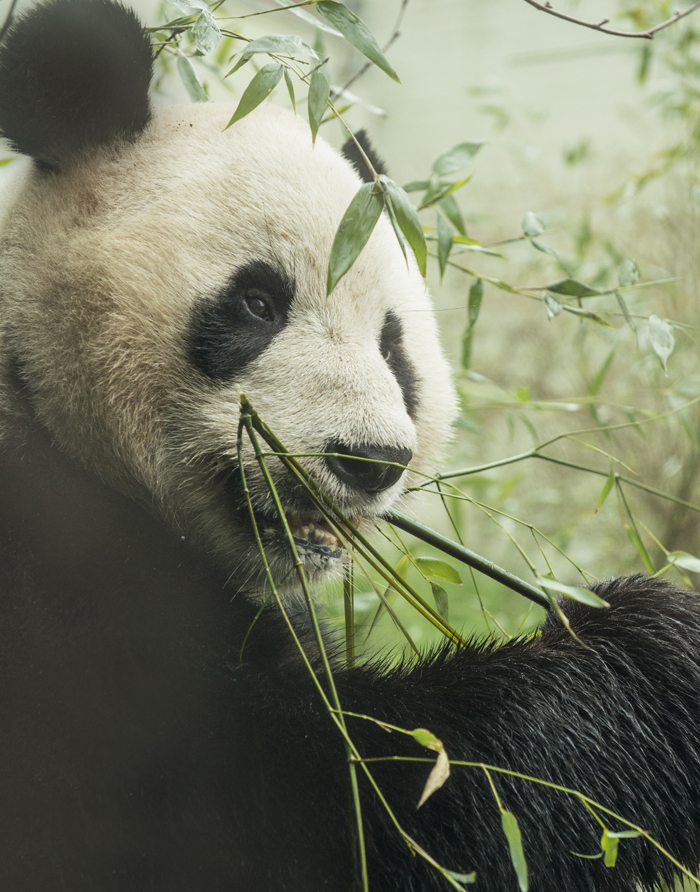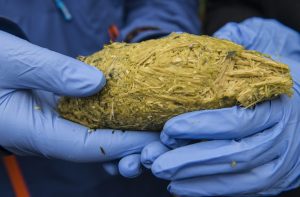What do Giant panda eat? The answer might seem obvious but the reality is far from simplistic.
The diet of the Giant panda (Ailuropoda melanoleuca) is highly specialised on bamboo, but there are hundreds of different bamboo species and over 60 of them are eaten by Giant panda. The bamboo species consumed vary geographically and seasonally and even individuals appear to differ in their choices. All these different bamboos vary in their nutritional content and digestibility and Giant pandas can be very picky about which bamboo they eat and when. To further complicate things panda may also feed on other plants, fungi and even other animals, and we have no information on the importance of these non-bamboo foods to panda health and breeding.
Researchers have been investigating pandas for decades and we do know a lot about them but the finer details of the diet have eluded us – so far.
There are two key difficulties in assessing panda diet.
- the full range of items consumed is difficult to determine from watching panda due to their reclusive nature
- bamboo species are very difficult to tell apart, especially once eaten and digested by a panda.
But we now have tools to answer this complicated question
Using DNA-based methods to investigate diet, we don’t have to find pandas, only their scats (their poo). We can extract the DNA from the scat, sequence it and then compare the scat DNA sequences to the DNA sequences of known bamboo species, or other plants, fungi or animals to work out what was eaten. However, this process is particuarly complicated in bamboo because they are difficult to tell apart even using DNA. So first we have to develop methods to focus on the parts of the DNA sequence that will allow us to distinguish between the different bamboo species. Once we can accurately tell them apart we will be able to find out a lot more about bamboo and the species that eat them.
In stage 1, Yáng Guāng (meaning “sunshine”) and Tián Tián (meaning “sweetie”), Edinburgh Zoo’s two giant pandas will be helping to develop these methods by providing samples to test these new methods on. This is an important step. We know exactly what has been fed to these captive pandas so we can determine how accurate and reliable our methods are. Then we will move onto stage 2 – using these methods to investigate diet in wild panda.
This project is an international collaboration between RBGE and several organisations including the Leverhulme Trust, Royal Zoological Society of Scotland (RZSS), the Kunming Institute of Botany and the Institute of Zoology both at the Chinese Academy of Science, China Conservation and Research Centre for Giant Pandas, Panda Centre within the Wolong Nature Reserve, Edinburgh Consortium for Giant Panda Conservation and Forest Landscape Restoration and the Australian Museum Research Institute and we adding to the list all the time!
We are only just starting this exciting project but it has already attracted a lot of attention. Check out the short segment from CBBC Newsround!
Follow our work on Giant panda diet on Botanics stories where there will be regular blogs about the project and fieldwork (and on twitter @Linda_Neaves)!


